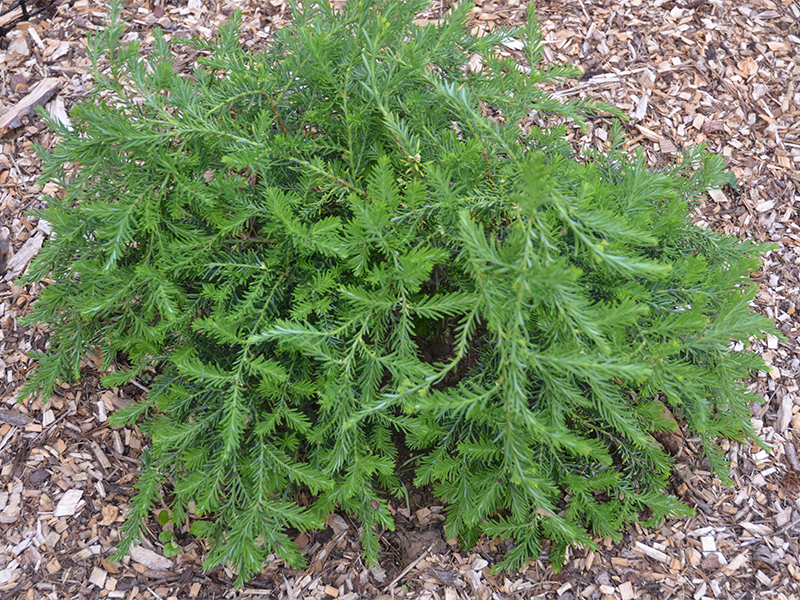
Woody > Prumnopitys > Prumnopitys andina > Prumnopitys andina
Prumnopitys andina
Chilean Yew, Plum Fir
Origin: Native to the Andes of south Chile and Argentina.
| Family |
| Podocarpaceae |
| Genus |
| Prumnopitys |
| Species |
| andina |
| Category |
| Woody |
| Type |
| Tree (evergreen) |
| Synonyms |
| Podocarpus andinus, Prumnopitys elegans |
| USDA Hardiness Zone |
| 7b - 8a |
| RHS Hardiness Zone |
| H5 |
| Temperature (°C) |
| -15 - (-10) |
| Temperature (°F) |
| 5 - 14 |
| Height |
| 12 m |
| Spread |
| 4 - 8 m |
Photographs
Description and Growing Information
Flowering Period
| Landscape |
| Hedges, screens and low maintenance architectural gardens. |
| Cultivation |
| Prefers full sun in moist but well-drained soils. |
| Shape |
| Bushy and pyramidal. |
| Growth |
| Slow |
| Pests |
| Generally pest and disease free. |
| Habitat |
| Forests at elevations of 200 - 1280 m. |
| Bark/Stem Description |
| Multi-stemmed with thin bark. |
| Leaf Description |
| Linear, falcate, coriaceous, yew-like leaves that are 1 - 2.5 cm long and 1.5 - 2 mm wide with a glaucous stripe on either side of the midrib. |
| Flower Description |
| Male cones are produced in sprays of 5 - 20. Pollen cones in groups of 10 - 20, each attahced on an axillary shoot that is 10 - 25 mm long and is 5 - 8 mm by 2.5 - 3 mm. Seed cones are 15 - 20 mm long and 10 - 15 mm wide on a 2 - 3 cm peduncle. |
| Fruit Description |
| Small, berry-like fruit that resembles a plum and is 10 - 15 mm wide. |
| Colour Description |
| The bark is grey. The leaves are a bluish-green. The male cones are cream. The fruit is green and ripens to a purplish-brown. |
| Texture Description |
| The bark is smooth. |
| Notable Specimens |
| Westonbirt, The National Arboretum, Tetbury, Gloucestershire, England. |
| Propagation |
| Seed sown in containers outdoors in spring or semi-rip cuttings in late summer. |
| Ethnobotanical Uses (Disclaimer) |
| Used primarily for the wood-chip industry. |

